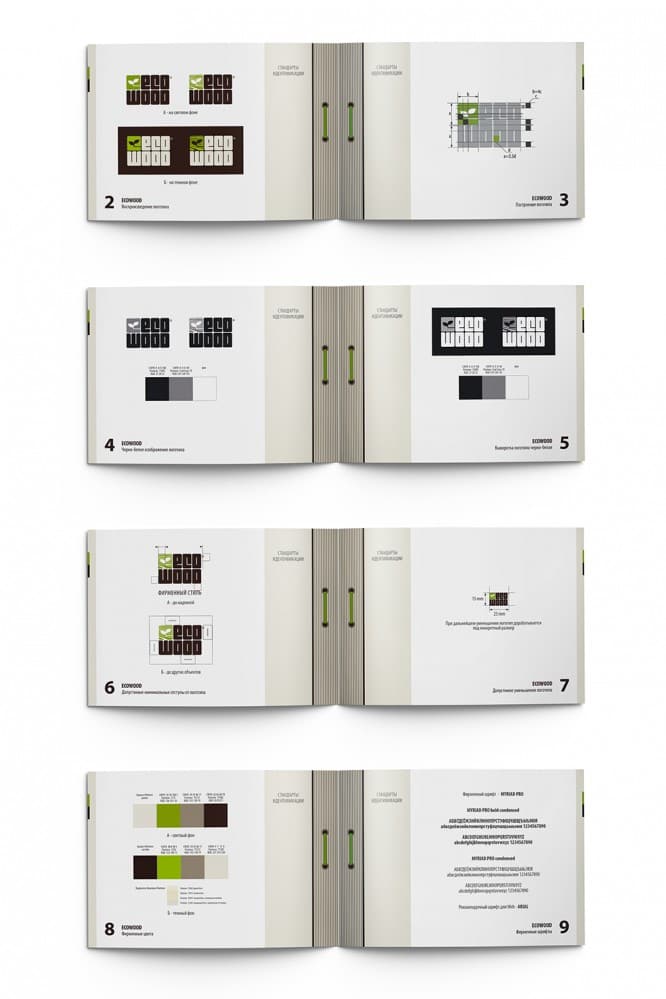What is a brand book, a guideline and a logo book?
What is a brand book, a guideline and a logo book?
A review article that will help you understand once and for all how a brand book, a guideline and a logo book differ from each other.
Truthfully about the brand book
The word “brand book” came to us from the English language. According to Wikipedia, brand book (he is brand beech or in english brand book) Is an official document of the company, which, first of all, describes the marketing basis for brand development, namely:
- brand concept
- brand attributes
- target audience of the brand
- competitive brand environment
- brand positioning
- long-term brand development strategy
In addition, the brand book contains a complete guide to corporate identity, which includes the rules for the use of all elements of the corporate identity on various media (both corporate and advertising).
An important section of the brand book is legal aspects of brand development: copyright and related rights, rights to patented trademarks, service marks and appellations of origin, etc.
As you can see, this is a capacious document of strategic value and intended exclusively for internal use by the company’s top managers.
In our country, a brand book is most often called corporate identity guide (he is corporate identity standards passport). As a matter of fact, in most cases the brand book contains only it. Why is this happening? Let’s try to figure it out.
From experience we can say: often companies develop a logo and corporate identity, having only a general idea of how their future brand and business in general will develop, and do not have a clear strategy and plans. With this approach, the sections of the brand book that turn it into a full-fledged document simply do not appear. And this is probably the main reason for the confusion of concepts. In other words, we develop a brand book, but omitting all the questions to which there are no answers, we end up with only a part of it – corporate identity standards…
Another reason for the confusion is that companies that are serious about branding tend to share a brand book. Strategically important information remains available only to a narrow circle of people with appropriate access. BUT the corporate identity guide is separated into a separate document, which is then used by the marketing department to work with designers, printers, manufacturers of outdoor advertising, etc. Moreover, such a document is often called a brand book (as its component part).
Corporate Identity Guide (example)
If we return to the terminology, then we are supporters of calling a spade a spade. A document that describes the logo and other elements of the corporate identity, as well as the rules for their use on various media, we call corporate identity guide…
Usually, a complete guide to corporate identity contains:
- Basic visual brand standards (image of the logo, slogan, corporate colors and fonts):
- Color logo image (all layouts)
- Logo construction (layout features, proportions)
- Colored logo reversal
- Monochrome version of the logo in black and white
- Black and white logo reversal
- Allowable reduction of the logo
- Custom logo design for very small surfaces such as the edge of a pencil
- Embossing logo (on a leather folder, on a diary) – one color
- Allowable minimum indents from the logo
- Invalid logo reproduction options
- Outline of the company’s slogan (in combination with a logo and without)
- Specifying brand colors (Pantone, RGB, CMYK, Web)
- Recommended fonts for printing and the web
- Signature character, as well as illustrations with a corporate character on all given topics
- Brand emblem (school, university, club, etc.)
- Special elements of corporate graphics (for example, corporate drawing)
- Registration of business documents and presentation materials (business card, letterhead, form of an internal administrative document – order, instruction, price list form, contract form, company folder and notepad, presentation template, commercial proposal template, etc.)
- Branded clothing (business and / or work)
- Branded packaging and label
- Registration of souvenir products
- Office and / or store design in a corporate style (facade and interior)
- Transport clearance
- Examples of advertising media design
Process of creation books with a guide to corporate identity includes the design layout of the book, the creation of illustrations for each section, writing the text of the manual, layout, as well as printed works, production of the cover, binding and, finally, the creation of an electronic version of the book (in PDF format).
Of course, all this costs money, but it’s worth it.

Guideline and logo book
Apart from the word “brand book“ you can often hear terms like “guideline“ and “logo book“… In short, they mean the following.
Guideline (in English guideline, abbreviated from Corporate Identity Quideline) Is a document that describes the rules for the use of all elements of the corporate identity on various media. Does it sound familiar? You are right, this is the corporate identity guide that we wrote about in detail above – only with a fashionable name.
Logbook (in English logo book) Is a document that contains all information about the logo, corporate logo colors and corporate fonts. This is essentially the first section of the corporate identity guide. If we are talking only about the development of a logo, as well as a document that describes in detail the rules for its use, then such a document is sometimes called a logo book. Fashionable and understandable.
Summary
It is known that any professional jargon serves to recognize one’s own and to confuse others. We are sure that in most cases such jargon is unnecessary and everything you need to know about the project can be expressed in ordinary business language…
It is difficult to fight the penetration of “unnecessary” foreign words into our life, but it is possible. Now you know the meaning of the terms “brand book“, “guideline“ and “logo book“, which means that you can safely discuss them with a potential contractor, and you can avoid confusion when concluding a contract for their development.
Source: paporotnik.com.ua
Cover photo: ShutterStock
…


